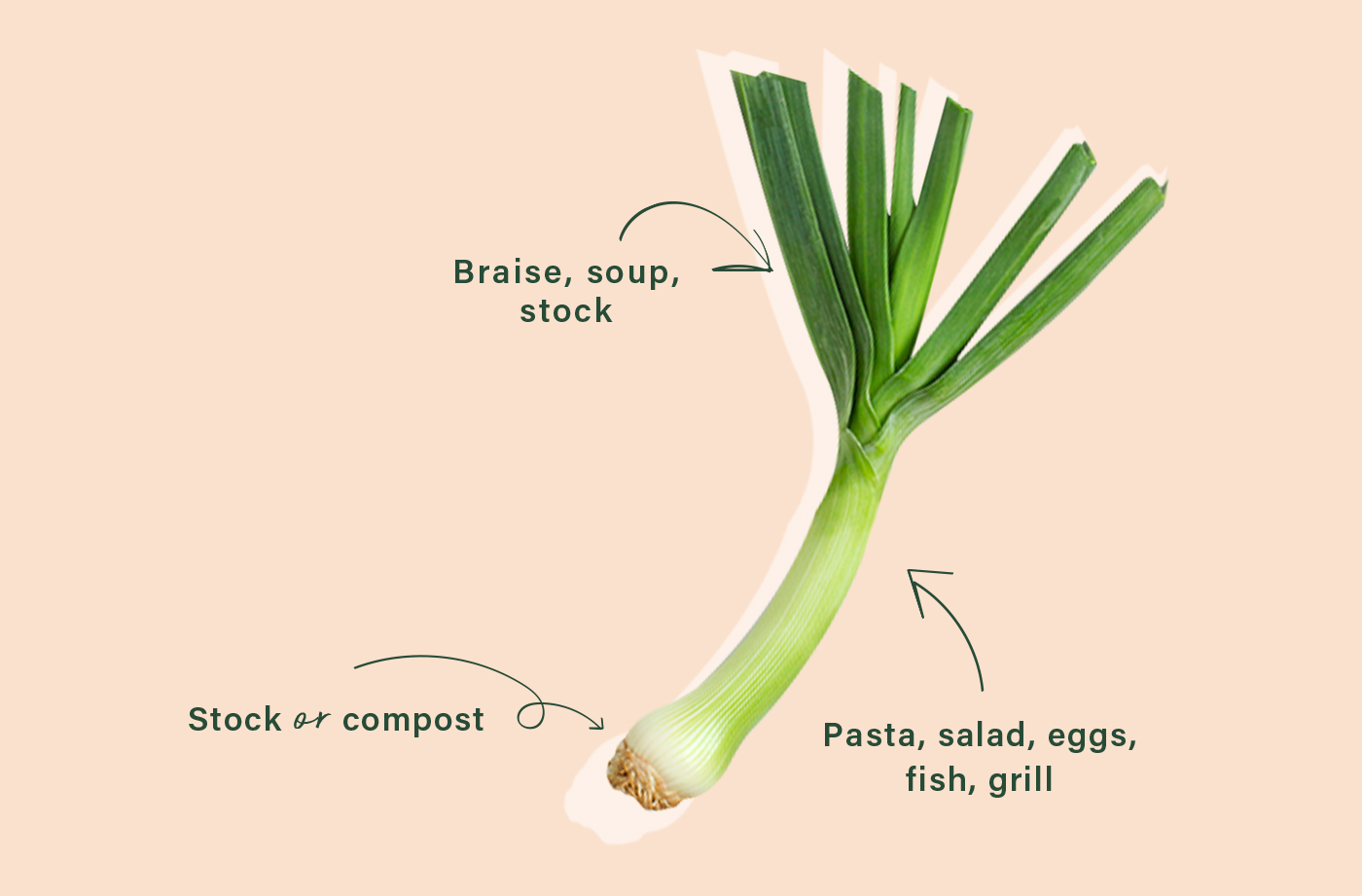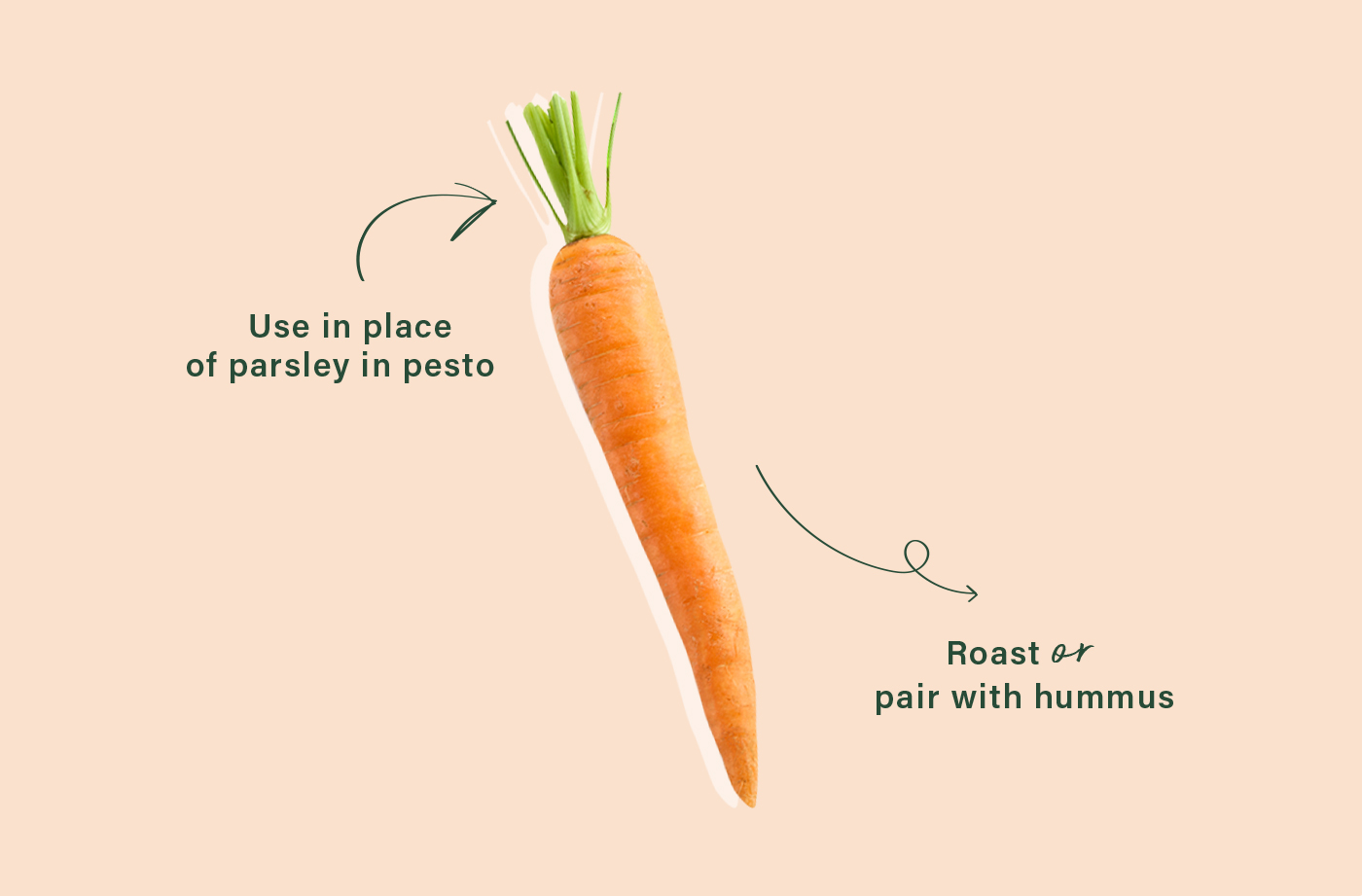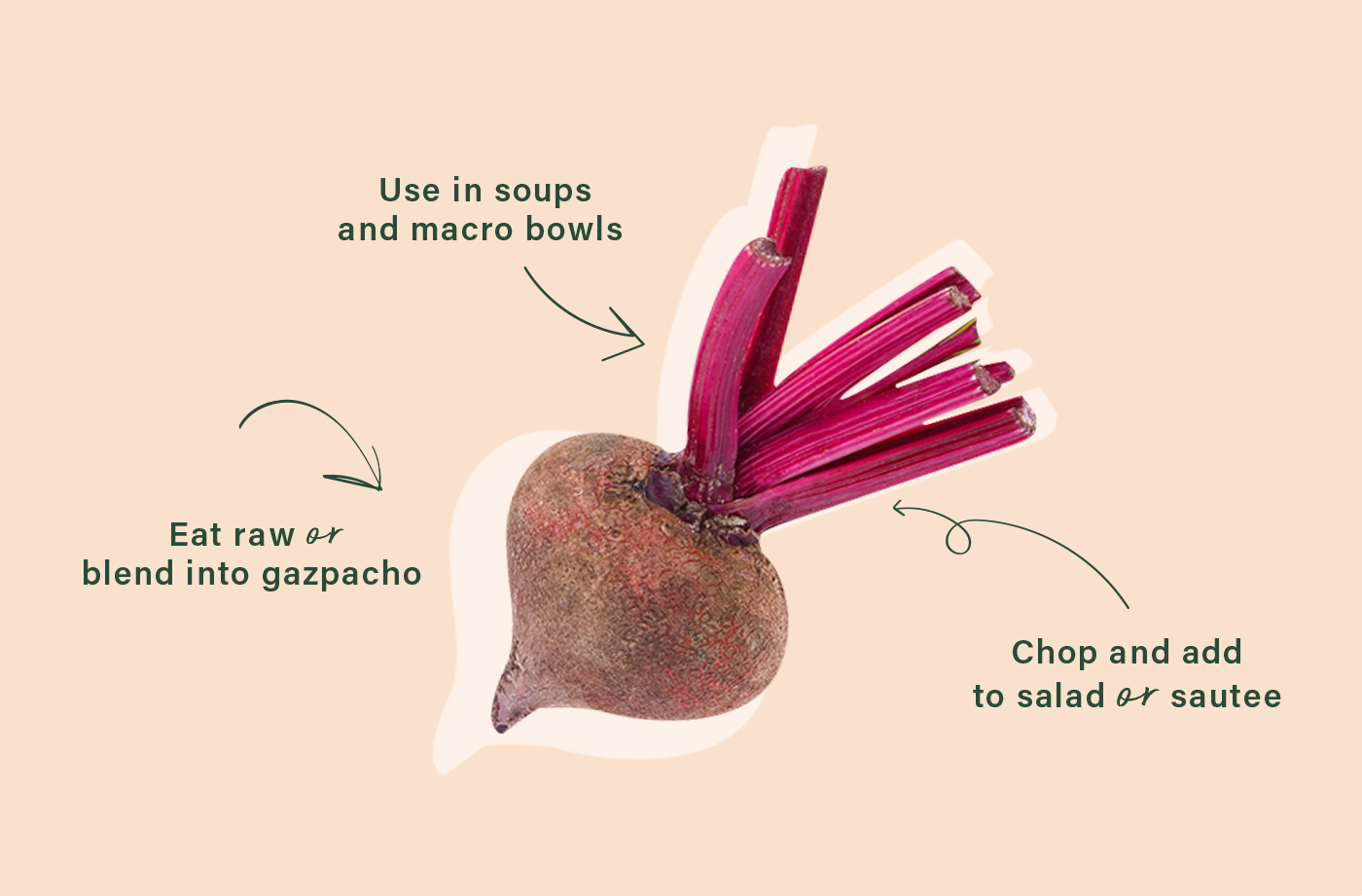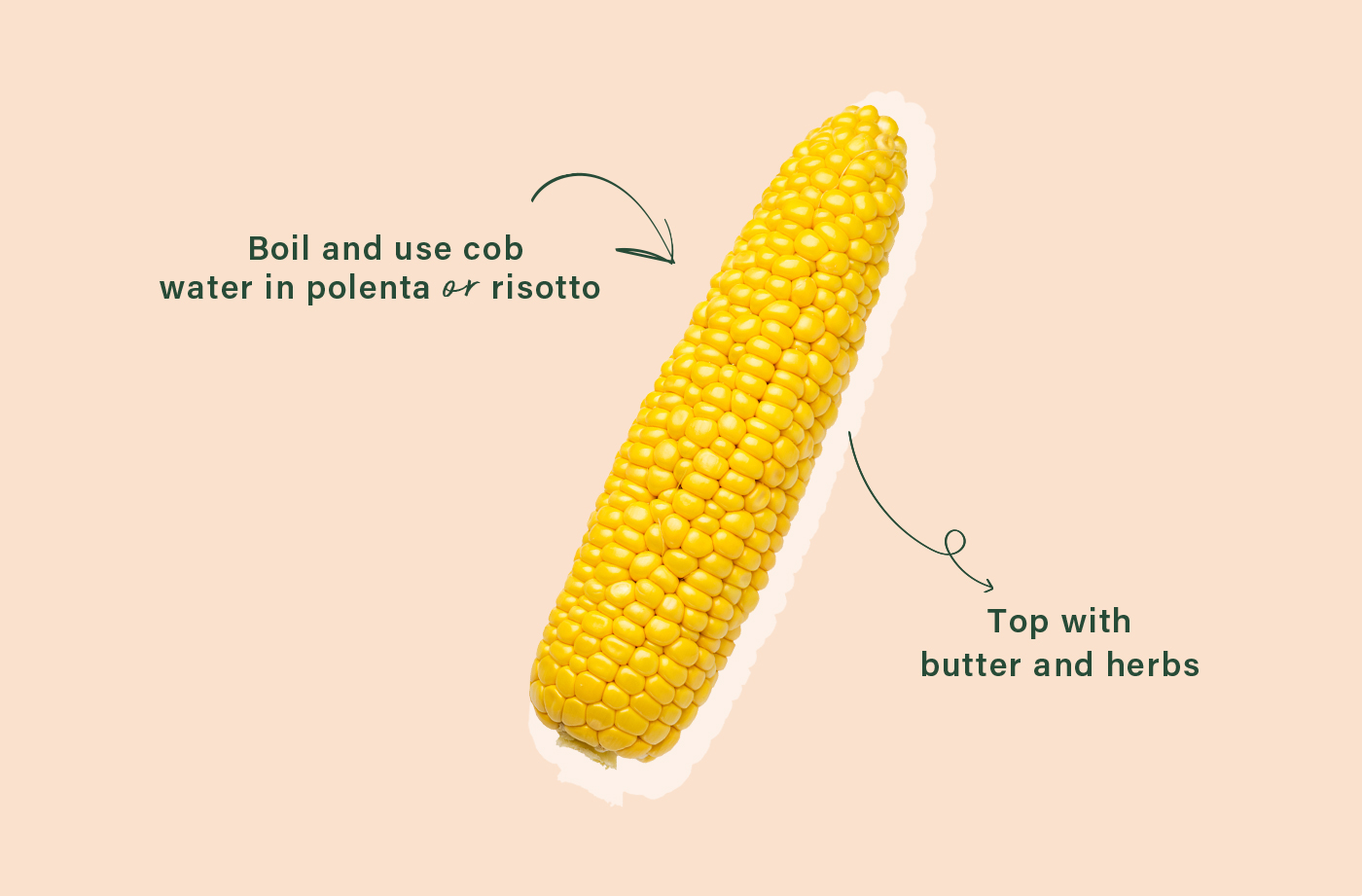These Graphics Show How Simple—and Delicious—Cooking With Veggie Scraps Can Be
Fortunately, some people have built a living figuring how how to use every single part of produce—and are happy to share their no-waste tips with the masses. Here, Reilly Brock, the content manager at Imperfect Foods, and Pulp Pantry CEO and founder Kaitlin Mogentale, share intel on how to use every single part of six popular veggies.
Scroll down to see how to cook with vegetable scraps.

Leeks
Brock loves cooking with leeks because they have a subtle sweetness and a bit of a bite. Most recipes call for the stem of leeks, which means that healthy eaters may just throw out the leaves and bulb of the plant without a second thought. However, Brock says you can truly cook with all three parts of the vegetable. "The leaves have the same sweet flavor as the rest of the plant—similar in taste to green onions—and taste amazing in vegetable stock," he says.
Brock and Mogentale both keep a plastic bag in their freezer, which they continually fill with veggie scraps because so many other often discarded parts of veggies can be thrown into stock, adding flavor and nutrients. "You can also use the leek bulb in stock too, and in fact they're often used in ramen," Brock says.

{{post.sponsorText}}
As for the meaty middle of the plant, Brock is a big fan of grilling it in warm weather and slow roasting it during milder months. "When you slow roast leeks, they almost caramelize in texture and are just to die for," he says.

Carrots
You surely already know what to do with carrots—eating them solo or with hummus, roast with spices, grate into a salad or dressing. But the carrot tops themselves aren't quite as intuitive to use, despite being 100-percent edible. "One popular use for carrot tops is incorporating them in homemade pesto, but there's a trick to it: you have to blanch them first," Mogentale says. (Blanching is a cooking technique where you boil vegetables for a just a few minutes, then immediately cool them in ice water to stop the cooking process.) This is because carrot tops are super hard to blend when they're totally raw. But once they're blanched and blended with your other pesto ingredients, they add another layer of flavor that compliments basil, pine nuts, olive oil, and garlic perfectly.
As for carrot leaves, Brock says they can be used in place of parsley. "You can blend them right up and use them in a pesto or a chimichurri sauce," he says. He recommends using lemon juice to balance out the earthy taste of the carrot greens when whipping up your sauces.

Beets
Beets' stalks and leaves make up the bulk of the vegetable, but they are rarely given the same attention as the roots. "Beets are in the same family as chard, so you can actually use the stalks the same way," Brock says—they can be chopped and added to salads or sautéed with other veggies. As for the leaves, Mogentale says she likes to incorporate them into soups and macro bowls in place of kale.
The beet roots themselves can be eaten raw, added to salads, or roasted with spices and topped with olive oil. Or, blend them up and enjoy in a smoothie or gazpacho.

Corn
Hopefully we don't need to tell you how to enjoy corn. But you probably don't do anything with the cob though, right? Whether you're grilling, boiling, or roasting, the kernels are scrapped off and the cob is thrown right in the bin. But Brock, of course, has a delicious way to make good use of it.
"Corn cobs are an overlooked wonder ingredient," he says. "You can simmer the cobs in water with some onion and basil and you'll end up with this rich cob essence that taste like sweet corn." Brock incorporates the cob water in polenta or risotto dishes to add more flavor. The more you know.

Kale
Kale salads are a staple in many healthy eaters' diets, but typically, only the leaves of the plant are used while the stems are quickly discarded. "Kale stems are really rich in fiber, so I like to freeze mine, slice them thinly, and add them to smoothies," Mogentale says.
Brock says kale stems can also be pickled. "Because of their earthy taste, I recommend pickling them with spices like coriander, mustard seeds, or chili flakes, which will help balance out the flavor," he says.
In general, both Mogentale and Brock say what's most important when it comes to cooking with vegetable scraps is keeping an open mind and a willingness to get creative. "Just start experimenting," Mogentale says. "When you start looking at the parts of your vegetables that are usually discarded and start brainstorming news ways to cook with them, it really opens up a whole new world of discovery."
Try this smoked Spanish paprika on top of your veggies to add a little kick. Or, pair them with this healthy dip.
Loading More Posts...